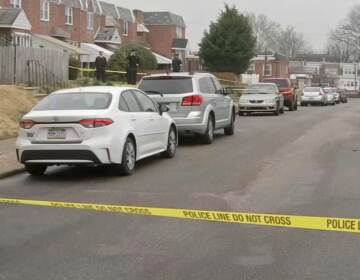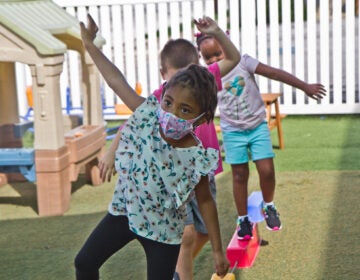Beyond ‘stranger danger’: Look and listen for these signs of child sexual abuse
Kids know their abusers between 85% and 93% of the time. Yet adults are often surprised to realize how close to home abuse really is.
Listen 5:09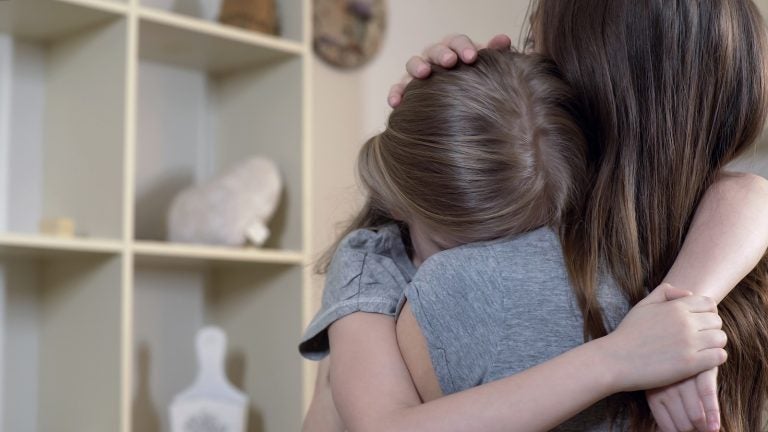
Kids know their abusers between 85% and 93% of the time. Yet that often comes as a surprise to adults.(motortion/BigStock)
How do we help children thrive and stay healthy in today’s world? Check out our Modern Kids series for more stories.
Matt Sandusky often discusses — in front of camera crews and at conferences — the sexual abuse that poisoned his childhood.
The attacker was no stranger. Sandusky, now in his 30s, says his adoptive father, former Penn State assistant football coach Jerry Sandusky, abused him for nine years.
Jerry Sandusky’s trial on 45 counts of child sexual abuse, leading to his 2012 conviction, sent a shockwave throughout the country. But in many ways, the story was not uncommon: Sexual abuse by a relative, friend or acquaintance isn’t the exception. It’s the norm.
And Matt Sandusky isn’t the only one talking about it.
“The large majority of the time, children are abused by somebody that they know,” said Mandy Mundy, who has spent more than two decades working for Network of Victim Assistance, or NOVA, a nonprofit in Bucks County that works with assault survivors and provides prevention education.
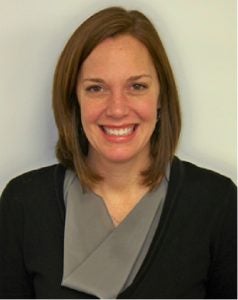
Mundy trains adults to detect and prevent child sexual abuse. Depending on the research, she said, children know their abusers between 85% and 93% of the time.
“I think one of the first real ‘Aha!’ moments for adults is how close to home this really is,” she said.
Debunking ‘stranger danger’
Decades ago, a “stranger danger” safety campaign cascaded into public consciousness. Posters, videos and picture books warned children to avoid strangers. They depicted adults waiting in playgrounds, offering candy, bringing a friendly dog, and imploring an indecisive child to trust them.
Today, experts such as Mundy view “stranger danger” with skepticism. Anyone can pose a threat, she said, but focusing too much on the hypothetical stranger in the park can detract from the larger problem.
“If we hold on to the ‘stranger danger’ myth and associate it with child sexual assault, then we’re overlooking the children who are being abused by people in their own families, in their own neighborhood, in their own school, in their own circle,” Mundy said.
Jenny Coleman is the director of Stop it Now!, which provides educational resources on assault prevention. After years of working in the field and hearing from abusers themselves, Coleman agreed “stranger danger” isn’t the most accurate depiction of sexual abuse.
On the contrary, she said, abusers often try to “become the best friend.”
“We don’t want folks to go out there looking for monsters, because they’re not going to find monsters,” Coleman said. “They’re going to find their own husbands and partners and family members and colleagues and neighbors.”
And once abuse begins, it might be impossible for a child to seek help, said Marie Fordney, who directs the Southern Arizona Children’s Advocacy Center in Tucson.
“I do think that we used to put the onus on the child to keep themselves safe. It was the child’s responsibility to jump up and scream, ‘No!’ and go get help,” Fordney said.
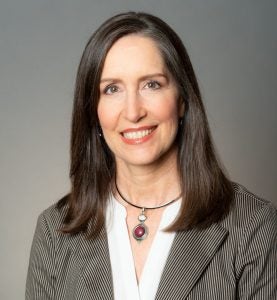
Children may be threatened into secrecy, physically unable to leave, or too young to say “no” in the first place, she said.
Based on its research in 2013, the nonprofit organization Darkness to Light estimates that 1 in 10 children nationwide experience sexual abuse before they turn 18.
What can adults do to interrupt abuse — or prevent it?
Recognizing the signs
When it comes to stopping child sexual abuse, listening is crucial, Mundy, Coleman and Fordney agreed.
If a child complains about visiting the house of a friend or relative, adults should take notice and ask why. If a child knows a surprising amount of sexual terminology for their age, that could be a red flag, too.
“We want to pause and think about, ‘Where is this kid getting this information?’” Coleman said. “How are they learning it?”
A common thread in child sexual abuse is what’s known as grooming — abusers manipulating children into trusting them.
Detecting grooming can be difficult, Coleman said. Many of the signs — spending time with the child, buying gifts — could easily be the actions of a caring relative.
But sometimes, they’re not. If a parent or guardian is unsure whether an adult is grooming a child, Fordney has a simple suggestion: Don’t allow that adult to spend time alone with your child. Go with them.
“It’s better to be discourteous than to be a victim,” she said.
If an adult suspects a child is experiencing abuse, Coleman suggests looking for changes in behavior or routine, like a spike in nightmares. If a child begins asking for help with things he or she usually does independently, like going to the bathroom or getting dressed, adults should take notice.
Any change is worth noting, Fordney said, because “depression can manifest as sadness, but it can also manifest as, `Wow, they’re suddenly taking so much better care of their appearance.’”
Advocating for abused kids
It was the week after Thanksgiving, and Clare Hine’s 3-year-old didn’t want to go to daycare. At first, Hine chalked it up to the Monday blues.
Then Hine’s daughter returned home, her back mottled heavily with severe bruises. The caretaker, her toddler said, had hit her — over and over again.
In a recent interview, Hine remembered trying to rationalize: Her daughter’s caretaker had been a family friend for years. Maybe, Hine began to think, the bruises came from her daughter playing on the slide and falling onto rocks.
“I was so concerned about the caregiver losing her business and losing her job and losing her income, because I know that they are tight on income,” Hine remembered.
Still, she had a gut feeling that something was horribly wrong.
That evening, the family drove to the emergency room, where physicians confirmed that the patterns on her daughter’s back pointed to deliberate abuse, Hine said.
Physical abuse can yield different behavioral patterns than sexual abuse does, but there are many commonalities, said experts who work with abused children. Hine’s daughter, who had endured physical abuse, began experiencing angry outbursts and nightmares that interrupted her sleeping patterns.
A year later, Hine said she is thankful she listened to her child — and she encouraged other parents to do the same.
Now, determined to keep their children safe, Hine and her husband have incorporated the simple act of listening into the family’s daily routine. Each evening, the family sets aside a time to turn the television off, push all distractions aside, and listen to one another at the dinner table.
“That’s when we just say, you know, ‘What was the best part about your day? What was the worst part about your day?’ And, ‘Does anybody have anything to talk about?’” Hine said.
As the Hines worked through a healing process, they took their daughter to the Southern Arizona Children’s Advocacy Center, where she spoke about the traumatic event through play therapy. In the end, the Hines were unable to press charges against the caregiver.
Clare Hine warned against giving the benefit of the doubt to someone who may be an abuser.
“You don’t care about anybody but your child in that moment,” Hine said. “If that caregiver truly cares about your child, then they would understand why you need to find out how and when those markings, or whatever abuse, happened.”
Almost every day, Fordney walks through the halls of the advocacy center, knowing that in at least one of the rooms sits a child who has dealt with unspeakable abuse and trauma. Still, she said, it’s a place of hope.
“It is a magical place in between terrible abuse and healing,” Fordney said. “It’s the moment where that abuse can end. And it’s really inspiring.”
There are child advocacy centers throughout the Philadelphia region and across the country. They were established to help ease the experience of a child who has undergone abuse. Without an advocacy center, a child is often forced to retell traumatic stories — to child protective services, to law enforcement, to lawyers.
Fordney recalled one child who crawled under a desk and refused to discuss the abuse, overwhelmed with the task of retelling the story. Child advocacy centers are one step in the societal effort to better treat and prevent abuse, she said.
“We have to start by first believing. The first thing you have to do is believe them and say, ‘OK, what happened?’”
And there’s a particular barrier with some children who are sexually abused, Fordney said: It can be difficult, if not impossible, for them to articulate what happened.
Coleman encourages parents to discuss sexual health and terminology with their kids, rather than making it taboo.
“They have questions,” Coleman said. “And they deserve to have accurate information about how to keep themselves safe and what to do if they don’t feel safe, and … what does it even mean to not be safe?”
Are you a mandated reporter?
Mandated-reporting laws vary widely by state, encompassing a variety of individuals from teachers, to foster parents, to religious leaders who are required to report even a suspicion of child abuse. When a report is made, it kick-starts an investigation.
New Jersey is among the few states that mandate that any person who suspects abuse report it.
Pennsylvania amended its mandatory-reporting law to include unpaid adult positions, from scout leaders to church volunteers. Today, mandated reporters in Pennsylvania must share their suspicions directly with the state, via its ChildLine website or by calling 1-800- 932-0313.
That wasn’t always the case, though. Before Jerry Sandusky’s conviction in 2012, mandated reporters in Pennsylvania reported directly to their supervisors.
The allegations against him started as early as 2000, yet Sandusky wasn’t behind bars until 2012. Mandated reporters, such as janitor James Calhoun and former assistant coach Mike McQueary, shared their suspicions with Penn State supervisors including football coach Joe Paterno, but no investigation was launched. Sandusky’s abuse continued for years.
Mandated reporters should act quickly, Mundy said, rather than give suspected abusers the benefit of the doubt. Acting as a bystander can mean a child is facing more abuse each day, she said.
“If a mandated reporter hesitates, pauses, waits … for a day, for a week, for a month [or] for a year,” Mundy said, “ultimately the child’s health is being compromised.”
WHYY is your source for fact-based, in-depth journalism and information. As a nonprofit organization, we rely on financial support from readers like you. Please give today.



